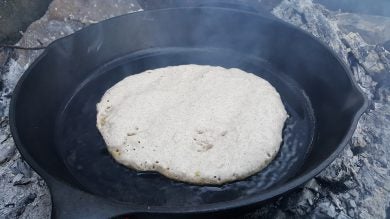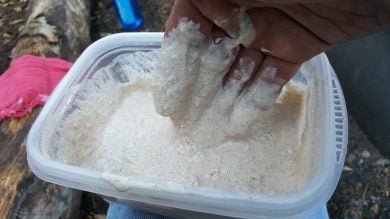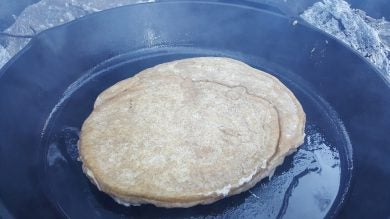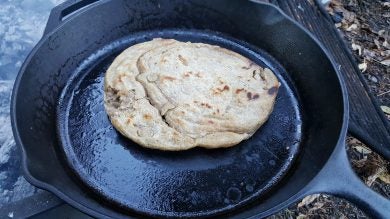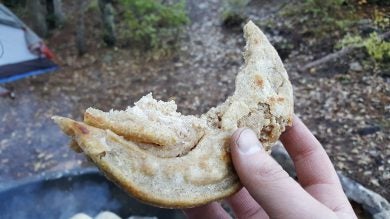Bannock Basics: The Do’s and Don’ts of Cooking a Popular Trail Food
Joshua Wussow 10.09.17
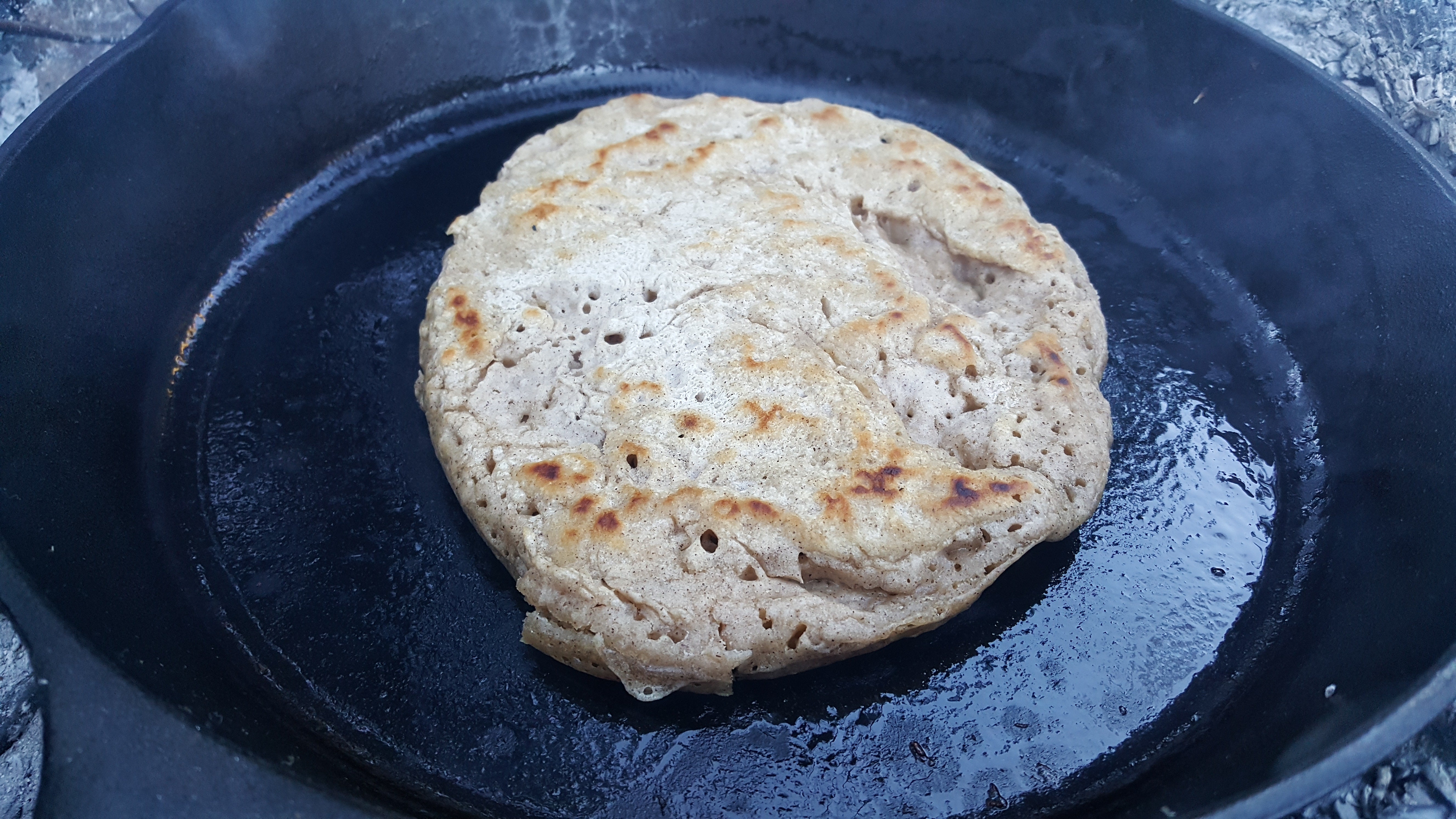
I’ve always been into cooking and camping, but mixing the two can sometimes be challenging. This is especially true when you’re packing light for a solo trip. But looking through my various outdoor guides, one recipe kept popping up: Bannock.
This simple baking-powder-and-flour concoction resembles a pancake or flatbread, fried in some form of fat or oil. It’s easy to pack, simple to mix, and full of delicious calories. Is it the most nutritional food option? Heck, no! You’re eating fried flour. But it’s a tasty treat for the trail.
The Recipe
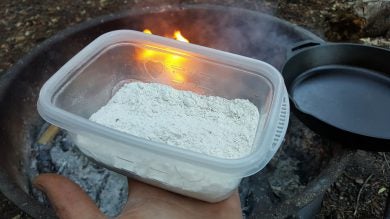
For one person, I recommend one cup of flour, ½ teaspoon of salt, and one teaspoon of baking powder. This won’t have a lot of flavor on its own, so feel free to throw in some cinnamon and brown sugar for a sweet version, or some garlic and onion powder for a more savory option. You can even add berries, cheese, and/or small chunks of meat if you’re feeling adventurous.
This mix can be stored in a bag or container until it’s ready to be cooked. Simply pour in some fresh water and mix until it’s about the consistency of thick pancake batter. Heat your pan (preferably cast iron) with enough oil to thoroughly coat the cooking surface. I like olive oil, but your taste may vary. Once the oil is shimmering, flick a drop or two of water at it – If it pops, you’re ready to go.
Pour in your mixture and make sure it’s evenly distributed. Let it sit for a few minutes, give it a flip, and cook the other side.
Sounds simple, right? Well, I managed to screw it up the first time I tried in the wild. So here are some tips I put together after my second successful attempt.
Do’s and Don’ts
DO make sure your coals are hot enough for the job. Eating half-cooked bannock batter is an unpleasant experience.
DO be sure your mix is stored in a tightly sealed container. Its fine dust will get through flimsy containers and into your pack if you’re not careful.
DO have a damp rag or other cleaning surface nearby. This batter will stick to your hands like glue during the mixing process, and you probably don’t want to wipe it on your pants.
DO add different ingredients. Bannock is a versatile medium, so take advantage of your creativity.
DON’T add too much water right away. You can always put more in if the batter needs to be thinned, but you’ll never get excess water back out.
DON’T constantly check the underside. Doing so will lengthen your cooking time and allow the pan to cool prematurely.
DON’T panic if the second side doesn’t get as golden brown as the first. This is a natural occurrence as the oil gets sucked up.
DON’T cut the bannock with a knife, as this is considered to be bad luck. Tear away with your hands for the most satisfying results.
If you’d like a more visual demonstration, check out these How-To videos from the folks at Black Owl Outdoors and Dutch Bushcraft Knives. Everyone’s method differs slightly, so this is a fun dish to experiment with.
Happy cooking!
